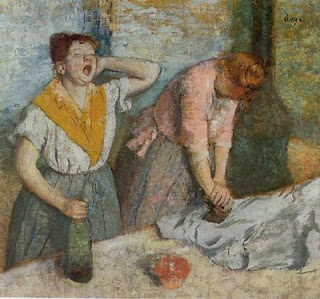Reading Boland's "The Journey" (1987) Part 7
Charles VI of France, called the Beloved, as well as the Mad, married Isabella of Bavaria in 1385. He suffered from bouts of insanity throughout his life, howling like a wolf through his palace, refusing to bathe, and, in later years, believing that he was made from glass. “The Glass King” ends the journey of this book. It is not only about the relationship between wife and husband, it is also about the relationship between the female poet and the male poetic tradition, as the poet makes clear when she breaks into the story of Charles VI and Isabella in her own person, to “elect” her “prince, demented// in a crystal past” as “emblem// and ancestor of our lyric.” This male lyric tradition is royal in his authority, and fragile in his powers. In conceiving poetry as a beautiful crystal, he is “out of reach// of human love.” The queen-wife-lover knows she needs his hand to turn stone into lace, the way the medieval stonesmiths did. This modern stoneworker is, however, an ordinary honest w...



